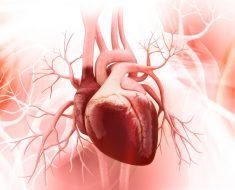With the emergence of severe acute respiratory syndrome coronavirus 2 (SARS-CoV-2) in Wuhan, China, the coronavirus disease 2019 (COVID-19) pandemic began. In just over a year, the virus has caused over 109 hundred million documented infections and taken more than 2.4 million lives. A new preprint on the bioRxiv* server describes the development of a live attenuated vaccine candidate to counter this growing threat.
.jpg)
The pathogen
SARS-CoV-2 is primarily a respiratory pathogen belonging to the Betacoronavirus genus of coronaviruses. Such viruses have especially large RNA genomes, about 30 kb in size, with multiple open reading frames that encode two large polyproteins and four structural proteins. The polyproteins, named open reading frames (ORF), are cleaved into 16 non-structural proteins (NSPs) by NSP3 and NSP5 proteases.
The spike antigen is one of the four structural antigens which mediates virus attachment to and entry into the target host cell. It binds to the human angiotensin-converting enzyme 2 (ACE2) receptor via its receptor-binding domain (RBD). Therefore, RBD antibodies are expected to neutralize virus infection, and most vaccine candidates today focus on eliciting antibodies to the spike or RBD.
Live attenuated virus vaccines
Live attenuated virus (LAV) vaccines have been a reliable means of inducing effective long-term immunity against various specific viral pathogens, such as polio and measles. These are developed by passaging the pathogen under heterogeneous conditions.
For instance, the LAV measles strain called AIK, used for vaccine production, was produced by passaging in sheep kidney cell lines and then in chicken embryo cells at 33°C. This allows it to replicate at 35°C but not at 37°C or 39°C. Such temperature-sensitive strains are suitable for LAV vaccines.
An end result is a weakened form of the virus that cannot replicate easily within human cells. This allows the virus to generate an immune response but not to establish a productive infection.
Temperature-sensitive SARS-CoV-2 mutants
In the current study, the researchers created a library of randomly mutated SARS-CoV-2 viruses from a B-1 strain obtained from a clinical isolate.
They screened the resulting ~650 viral plaques to identify four temperature-sensitive (TS) mutants of SARS-CoV-2. All four TS strains caused cytopathic effects (CPE) at 32°C on day three post-infection (dpi) but not at 37°C.
Individually examined at 32°C, 34°C or 37°C, they found that one of these strains, A50-18, had a replication profile that indicated its suitability for intranasal inoculation. While it showed equivalent replication to the parental B-1 strain at33–35°C, no infectious virus was found at 37°C, indicating its inability to proliferate in the lungs.
A50-18 contained six missense mutations in NSP14 and the three structural proteins S, E, and N. Unlike the other three TS strains, it did not have the characteristic NSP3 mutation associated with this phenotype. This mutation is similar to that found in TS strains of another coronavirus, the mouse hepatitis virus (MHV).
Instead, the A50-18 strain was found to owe its TS phenotype to the NSP14 mutations, three of which are being reported here for the first time.
NSP14 is involved in viral genome replication, participating in complex formation with other NSPs. One of the mutations observed here is the G416S mutation in the methyltransferase domain of the NSP. Another is the G248V mutation in the exo-ribonuclease domain. The latter was the only mutation to revert to the wildtype form in revertant studies. This makes it probable that this is a key mutation in the development of temperature sensitivity.
The mutant enzymes may be temperature-dependent in their activity. Alternatively, the structure of the NSP may be altered by temperature, hindering complex formation with other NSPs and therefore preventing viral replication.
Pathogenicity reduced
Pathogenicity studies showed that this strain failed to replicate in Syrian hamsters, a model of SARS-CoV-2 in wide use. No loss of body weight was observed in hamsters inoculated with this strain, vs a 10% or 20% loss in animals who received low or high doses of the parental B-1 strain, respectively.
On pathological examination, the lungs of hamsters infected with the B-1 strain showed edema, bleeding and destructive lesions. Those inoculated with the A50-18 strain had no serious lung lesions, on the other hand.
The virus titer in the nasal wash samples was comparable with both strains, but the lung titers were 3,500 times lower in the hamsters infected with the A50-18 strain. These findings indicated successful attenuation of this strain, impairing its replication within lung cells.
Antigenicity retained
The researchers also found that the A50-18 strain could be inoculated intranasally into Syrian hamsters, protecting them against reinfection with wildtype B-1 virus after 21 days.
In unexposed hamsters, B-1 exposure caused significant weight loss. This was not seen with hamsters pre-infected with either the B-1 or the A50-18 strains. This indicates that the attenuated A50-18 strain still induces protective immunity against the wildtype virus.
The neutralizing antibody titer in the sera of mock-infected hamsters was below 20 but went up to 160–640 after infection with the A50-18 strain. While considerably lower than the titer of 640–5120 obtained with the wildtype B-1 virus, this titer was found to be adequate to prevent reinfection of Syrian hamsters.
What are the implications?
The study reports the A50-18 strain of SARS-CoV-2 as a potential LAV candidate. When tested against a Syrian hamster model, it was found to be incapable of producing lung damage or weight loss, unlike the wildtype virus. When exposed to the A50-18 strain initially, the animal was protected against disease induced by the wildtype virus.
The phenotype of the A50-18 resembles that of the measles AIK strain and other LAVs already approved for clinical use. Despite the risk of reverting back to the pathogenic wildtype form, LAVs offer the attractive benefits of inducing durable and robust immunity similar to that following natural infection.
In addition, their ability to induce mucosal immunity via IgA in mucosal secretions indicates its high potential to protect against SARS-CoV-2, which is transmitted through the nasal cavity, with its high ACE2 expression. It also induces specific T cell immunity.
Further study is required to understand the potential for this strain to revert and whether the intranasal proliferation of this strain could cause neurological complications, similar to those in COVID-19 patients.
These results suggested that A50-18 may be a novel live attenuated vaccine candidate for the prevention of COVID-19.”
*Important Notice
bioRxiv publishes preliminary scientific reports that are not peer-reviewed and, therefore, should not be regarded as conclusive, guide clinical practice/health-related behavior, or treated as established information.
- Okamura, S. et al. (2021). Live attenuated SARS-CoV-2 vaccine candidate: Protective immunity without serious lung lesions in Syrian hamsters. bioRxiv preprint server. doi: https://doi.org/10.1101/2021.02.15.430863, https://www.biorxiv.org/content/10.1101/2021.02.15.430863v1
Posted in: Medical Science News | Medical Research News | Disease/Infection News | Healthcare News
Tags: ACE2, Angiotensin, Angiotensin-Converting Enzyme 2, Antibodies, Antibody, Antigen, Bleeding, Cell, Coronavirus, Coronavirus Disease COVID-19, Edema, Efficacy, Embryo, Enzyme, Genome, Immune Response, in vivo, Kidney, Lungs, Measles, Mutation, Pandemic, Pathogen, Phenotype, Polio, Proliferation, Receptor, Respiratory, RNA, SARS, SARS-CoV-2, Severe Acute Respiratory, Severe Acute Respiratory Syndrome, Syndrome, Vaccine, Virus, Weight Loss

Written by
Dr. Liji Thomas
Dr. Liji Thomas is an OB-GYN, who graduated from the Government Medical College, University of Calicut, Kerala, in 2001. Liji practiced as a full-time consultant in obstetrics/gynecology in a private hospital for a few years following her graduation. She has counseled hundreds of patients facing issues from pregnancy-related problems and infertility, and has been in charge of over 2,000 deliveries, striving always to achieve a normal delivery rather than operative.
Source: Read Full Article





